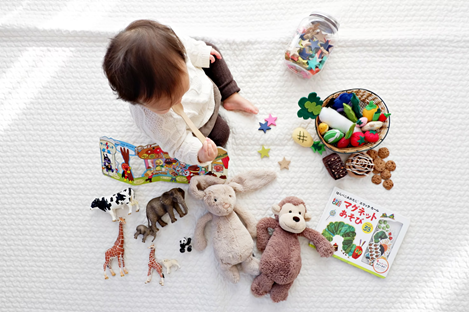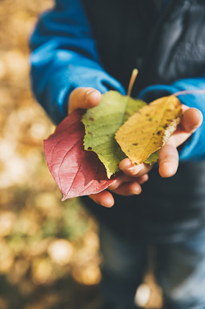8.6.2: Categorization
- Page ID
- 140101
Concept of Categorization
Infants and toddlers are constantly experiencing new and recurring objects and events. The ability to form categories is a core cognitive ability that helps organize these experiences. Without categorization, we would treat every entity we encounter (e.g., every golden retriever) as unique. Identifying a category to which an object or entity belongs (e.g., a dog, a retriever) permits us to make inferences that go beyond our immediate experience with that entity (e.g., retrievers bark, have sharp teeth, etc.). Categorization, therefore, is a fundamental cognitive process, and one that is especially important for infants and toddlers who encounter new objects, entities, and events every day. [1] [2]

A considerable body of research reveals that in the first months of life, infants can already successfully and spontaneously form object categories of animals, vehicles, and geometric shapes (Balaban & Waxman, 1997; Novack et al., 2021; Quinn, Eimas & Tarr, 2001). For example, Figure \(\PageIndex{2}\) shows a sample of stimuli used in a categorization experiment with 3 to 4 month old infants (Ferry, Hespos & Waxman, 2010). In the familiarization phase, infants were shown various types of dinosaurs, varying in color. In the test phase, infants saw two objects in the same color, one dinosaur (familized object) and one non-dinosaur object not shown in the familiarization phase (novel object). To measure categorization, infants’ looking time at the objects in the test phase was measured. The results demonstrate that already by 3 to 4 months of age, infants are cognitively forming categories of objects they encounter. [1] [2]

By 12 months, however, infants reach a turning point where what matters is not whether infants are listening to language in general, but more precisely, what is being said about specific objects. By 12 months, infants track not only which objects and which words are presented, but also how the words and objects are paired together (Waxman & Braun, 2005). Specifically, when infants hear the same label with each object, the labels highlight commonalities between them and thus facilitate their categorization, whereas when infants hear a distinct label for each object, the labels highlight their differences and thus facilitate their individuation (Dewar & Xu, 2007; Xu, Cote & Baker, 2005). [5]
The research on categorization suggests that young infants begin categorizing objects by 3 to 4 months of age and that language promotes categorization. Therefore caregivers can support categorization through learning experiences and language use. With learning experiences, caregivers can provide play objects and manipulatives where similarities and differences can be easily identified through color, size, texture and shape. Objects within and across categorical boundaries are also important. For example, objects of one type of animal such as fish can be provided alongside another type of animal, such as birds. This can help children identify commonalities within the category of fish and differences across the categories of fish and birds. To promote categorization with language, caregivers can be purposeful with the language they use by labeling objects within and across categories and highlighting similarities and differences between objects. Figure \(\PageIndex{3}\) shows a toddler holding three leaves. Each leaf is a different color, size and shape. As a caregiver, what words or phrases could you use to support a toddler’s categorization process when playing with these leaves?

[1] Althaus et al., (2020). Infant categorization as a dynamic process linked to memory. Royal Society Open Science, 7(10), 200328. CC by 4.0
[2] Kadlaskar et al., (2020). Does human touch facilitate object categorization in 6-to-9-month-old infants? Brain Sciences, 10(12), 940. CC by 4.0
[3] Image from Shirota Yuri on Unsplash
[4] Image adapted from Kadlaskar et al., (2020). Does Human Touch Facilitate Object Categorization in 6-to-9-Month-Old Infants? Brain Sciences, 10(12), 940. CC by 4.0
[5] Ferguson et al., (2015). The precision of 12-month-old infants’ link between language and categorization predicts vocabulary size at 12 and 18 months. Frontiers in Psychology, 6, 1319. CC by 4.0
[6] Image from Markus Spiske on Unsplash

